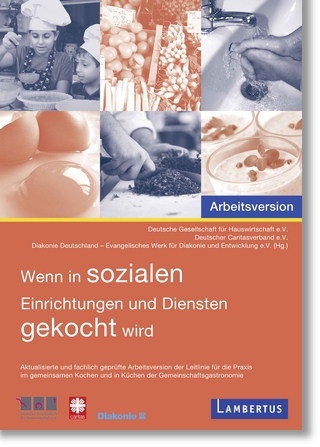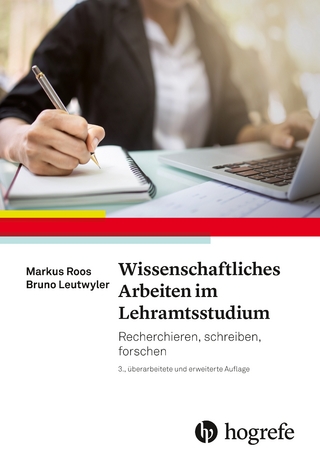
A Coherent Curriculum for Every Student
Rowman & Littlefield (Verlag)
978-1-4758-5261-5 (ISBN)
The proposals selected for inclusion in this book address the whole of the curriculum–all levels, all subjects, all age-groups; they deal with entire program change rather than with incidental changes in content, program arrangements, teaching approaches, or other limited alterations. This book is intended to be a useful resource for those responsible for making decisions in a particular school or school district or at a broader policy-making level, about what the entire curriculum should be and should include. It draws attention to the work of many thoughtful persons who have dealt with the issue of what a coherent curriculum might be like and who, in some instances, have set up actual programs based on their ideas.
Edmund C. Short is Professor Emeritus of Education, The Pennsylvania State University, and is currently Graduate Faculty Associate, University of Central Florida. His professional career has focused primarily on curriculum planning, design, theory, and research.
Foreword
Preface
Introduction
Part One-Curriculum Proposals from the Past and Present
Academic-Focused Coherent Proposals
1. Adler (1982)
2. Broudy, Smith, Burnett (1964
3. Chaucer (2012)
4. Egan (1997)
5. Gardner (1999)
6. King, Brownell (1966)
7. Phenix (1964)
8. Academic-Focused Partial Proposals, Bennett (1987), Eisner (1982), Gardner (2008), Hirsch (1988), Koerner (1959), Parker, Rubin (1966), Reid (1980)
9. Democracy-Focused Coherent Proposals, Beane (1997)
10. Hopkins (1941)
11. White (1991)
12. Democracy-Focused Partial Proposals, Banks (2019), Brameld (1945), Educational Policies Commission (1938). Goodlad, Lovitt (1993), Grant (2012), McLaren (2007), Miller (2002), Newmann (1975), Rebell (2018)
13. Global-Focused Coherent Proposals, Goodlad (1974)
14. O’Sullivan (1999)
15. Global-Focused Partial Proposals, Braus, Wood (1994), Robinson (2015), Santone (2019), Waks (2014)
16. Living-Focused Coherent Proposals, James (1972)
17. Prensky (2016)
18. Stratemeyer, Forkner, McKIm, Passow (1947)
19. Totten, Manley (1969)
20. Weinstein, Fantini (1970)
21. Living-Focused Partial Proposals Battelle For Kids (2019), Bremer (1975), Federal Security Agency (1951), Ontario DOE (1968), Rubin (1969), Rugg (1936)
Person-Focused Coherent Proposals
22. Berman (1968)
23. Costa, Liebmann (1997)
24. Doll (1993)
25. Frymier (1973)
26. Macdonald, Wolfson, Zaret (1973)
27. Miller (2007)
28. Person-Focused Partial Proposals; Barrow (1984), Beane, Lipka (1984), Bookewalter (2003), Cole (1972), Davis (1971), Eble (1966), Ergas (2017), Goodson (2014), Jones, Bouffard (2012), Kilpatrick (1931), Kline (1971), Leonard (1968), Parker (1963), Pinar (1975), Postman,Weingartner (1973), Pritzkau (1971), Rogers (1983), Weiss, Moran, Cottle (1975), Zhoa (2018
29. Problem-Focused Coherent Proposals; Collins (2017)
30. Faunce, Bossing (1958)
31. Pearl (1972)
32. Scriven (1972)
33. Sizer (1992)
34. Thelen (1972)
35. Problem-Focused Partial Proposals; Ammons (1969), Bowers (1974), Hopkins (1994), Marsh,Codding (1999), Miel (1969), Miller (2018), Murname, Levy (1996), Perkins (1986), Raup, Axtelle, Benne, Smith (1962), Swartwood (2013), Wasserman (2018)
36. Values-Focused Coherent Proposals; Noddings (1992)
37. Phenix (1961)
38. Purpel (1989)
39. Vandenberg (1990)
40. Values-Focused Partial Proposals; Boyer (1995), Egan, Cant, Judson (2013), Frazier (1980), Hantzopoulos (2016), Kimball, McClellan (1962), Miller (2000), Smits, Naqvi (2015), Ulich (1965)
Part Two -Practical Assistance for Creating a Total Curriculum
Chapter 41: Program From a Curriculum Proposal
Choosing a Viable Curriculum Proposal on Which to Base an Actual Curriculum
Chapter 42: Grasping the Place of Curriculum within Historical and Contextual Realities
Finding Guidance on the Curriculum Design Process Itself
Assuring Coherence in the Curriculum Design and Programmatic Features
References
Part Three-How To Use This Book
Appendix A: References Giving What Earlier Curriculum Authorities Said Would Be Needed in Future Curricula
| Erscheinungsdatum | 09.10.2019 |
|---|---|
| Verlagsort | Lanham, MD |
| Sprache | englisch |
| Maße | 152 x 229 mm |
| Gewicht | 249 g |
| Themenwelt | Sozialwissenschaften ► Pädagogik ► Allgemeines / Lexika |
| Sozialwissenschaften ► Pädagogik ► Bildungstheorie | |
| ISBN-10 | 1-4758-5261-4 / 1475852614 |
| ISBN-13 | 978-1-4758-5261-5 / 9781475852615 |
| Zustand | Neuware |
| Haben Sie eine Frage zum Produkt? |
aus dem Bereich


